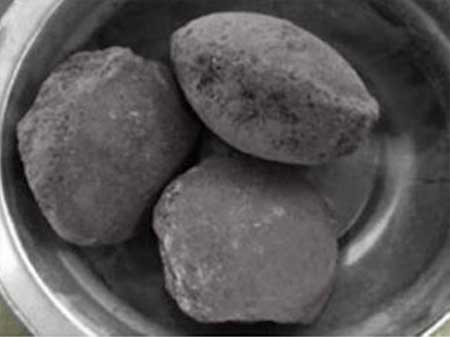From the current point of view, in the field of metallurgical industry production, in order to overcome the limitation of large demand and insufficient supply of resources, iron and steel enterprises have been investigating and studying how to realize the circulation of solid wastes so as to build a circular economy in the iron and steel industry.
Industrial solid waste not only pollutes the environment but also causes a huge waste of resources, which is one of the important issues concerned by the comprehensive utilization of resources and environmental protection in the world. Therefore, large enterprises finally explore recycling technology through the successful application of cold briquette technology in solid waste recycling. On the premise of combining the development and use of binder, a complete set of technologies are formed simultaneously to meet the needs of industrial recycling. From the perspective of enterprise development, the cold briquettes made of new composite binders have formed some characteristics, which are reflected in industrial applications: processing inside the enterprise can effectively save costs, reduce process energy consumption and environmental pollution. The powder solid waste is moderate in size and uniform in particle size after being cold formed, and can be directly put into a production unit without crushing. At present, mature equipment can be basically used in the production process, and large-scale production can be carried out.

Performance of Blast Furnace Burden
Performance requirements of burden which is coming into the furnace
Judging from the current blast furnace production, the iron-containing burden used in blast furnace iron making is mainly sintered, pelletized and lump ore. The practice has proved that in order to meet the requirements of good metallurgical properties for blast furnace production, the burden must meet the requirements of good metallurgical properties. Metallurgical properties directly reflect whether the structure of blast furnace charging is reasonable. Metallurgical properties usually include: compressive strength, reducibility, low-temperature reduction pulverization rate and expansion rate, load softening and soft melting temperature.
Crushing strength of cold briquettes
At present, there is no strict restriction standard for the chusing strength of iron-containing burden. Therefore, each enterprise has made different requirements on the furnace entry conditions in combination with its own conditions. Generally, the compressive strength of pellets/briquettes is greater than 1600N,1800N or 2000N.
Low-temperature reduction pulverization rate of cold briquettes
Low-temperature reduction pulverization refers to the characteristic of iron ore fragmentation and pulverization during low-temperature reduction, which is one of the key factors that determine whether the charging can adapt to the shaft furnace reactor and the composition of reducing gas. The more serious pulverization, the worse the air permeability of the furnace and the worse the furnace condition.
Why the low temperature reduction index of cold briquettes is much higher than the sinter standard
The composite bonding adopted by the cold pressing block has a completely different consolidation mechanism from sinter, and there is no material condition for low temperature reduction and pulverization. There is no liquid phase crystallization process in the forming of cold briquette, and magnetite is not generated in the reduction process, resulting in less fragmentation and pulverization.
Reducibility of cold briquettes
As the cold briquettes are formed by cold pressing of waste materials, and the content of ferrous oxide in the waste materials is relatively high, the content of ferrous oxide in the cold briquette samples is relatively high compared with other charging materials. On the other hand, due to the high content of ferrous oxide, their oxidization will also be on the high side, thus it can be inferred that their reducibility will be on the low side.


Original cold briquettes and briquettes after reduction
Original cold briquettes and briquettes after reduction
Based on the actual application situation and the application experience of low reducibility ore, it is suggested that the reasonable proportion of cold briquettes used in blast furnace is 0-5%, and the proportion of 10% can be tried, and the limit is recommended not to exceed 20%.
At present, the cold strength of briquettes has the same level of strength value as that of ordinary oxidized pellets, which can completely meet the requirements of blast furnace production. Similarly, the composite bonding adopted by the cold briquette has a completely different consolidation mechanism from sintering, and there is no material condition for low temperature reduction and pulverization, so the ability to maintain morphology in the briquette zone under the reduction atmosphere of blast furnace is not questioned.
However, the reducibility of cold briquettes is poor, as the FeO content of cold briquetted materials is as high as 25-30%, which is seriously unfavorable to the utilization of gas on the blast furnace. Excessive use will lead to higher overall consumption of the blast furnace and lower energy consumption efficiency.
Cold briquette has a broad market prospect in the future, which can effectively solve the problems of various fine ores not being allowed to enter the furnace and comprehensive utilization of secondary resources such as various iron-containing dust and dust in metallurgy and non-ferrous industries, and can realize the recycling of solid wastes and reduce environmental pollution.
